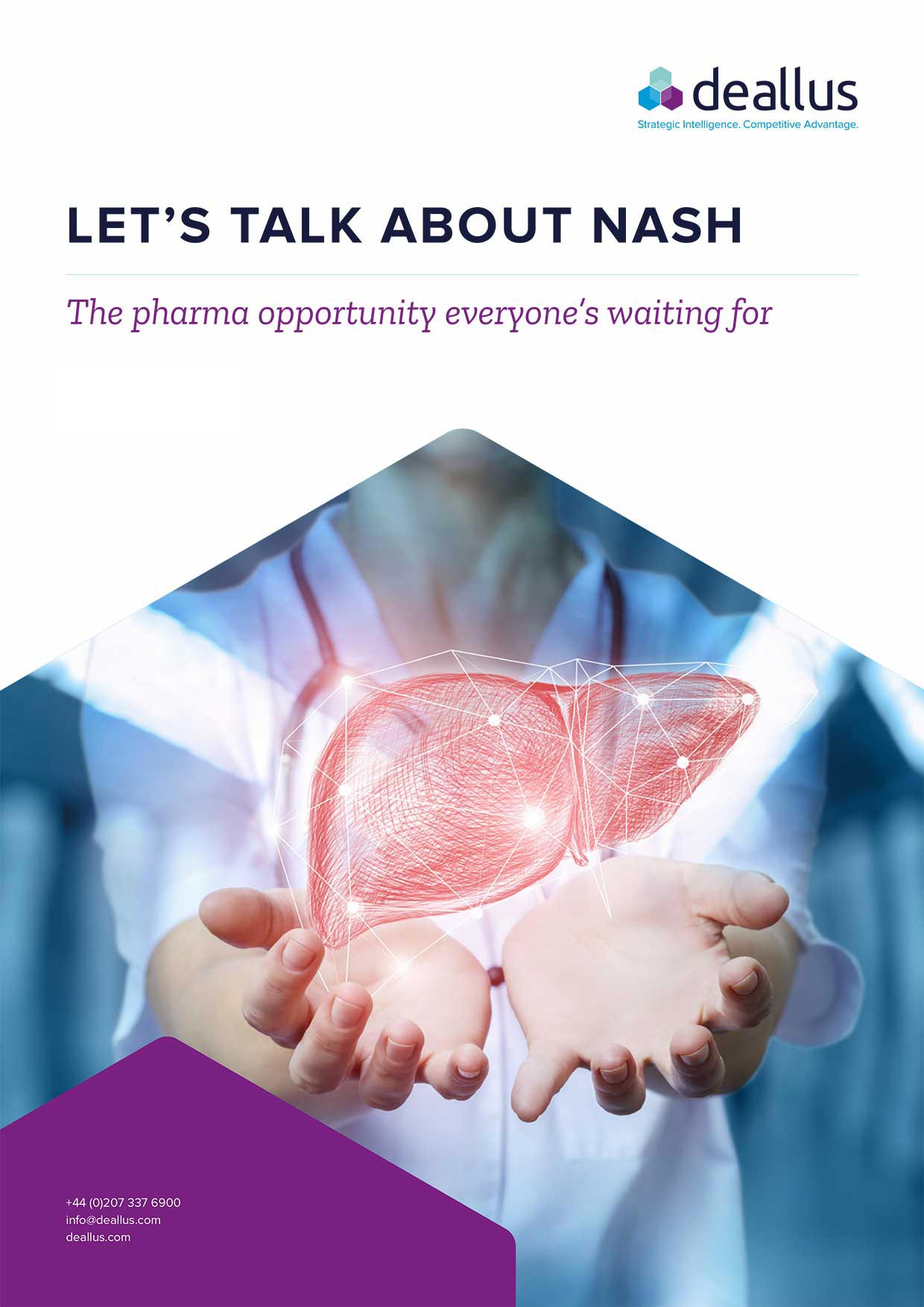Let’s talk about NASH – The pharma opportunity everyone’s waiting for
The race to treat NASH. Several promising candidates are currently competing in a multi-billion-dollar race. NASH, or non-alcoholic steatohepatitis, affects millions of patients world-wide and by 2020 is projected to replace hepatitis C as the number one reason for liver transplantation in the United States.
Multiple drug developers have taken on the challenge and a variety of different approaches are currently in the pipeline to tackle this complex, silent disease. Now all eyes are on the finish line to see who will be the first to enter this lucrative and untapped market.
Understanding the bigger picture of NAFLD
Non-alcoholic fatty liver disease (NAFLD) is an umbrella of disorders characterized by the accumulation of excess fat in the liver of people who drink little or no alcohol. NAFLD is the most common chronic liver condition in the world with a global prevalence estimated to be 25.2.%4 In the United States, NAFLD is the most common form of chronic liver disease, affecting about one-quarter of the population. In 2017 the direct lifetime costs associated with NAFLD were $222.6 billion; $95.4 billion of this was just for patients with an advanced form of liver disease known as non-alcoholic steatohepatitis or NASH.
Who is at risk?
A wide range of diseases and conditions can increase the risk of NAFLD including obesity, type 2 diabetes, hypertriglyceridemia, insulin resistance, and hypertension. In fact, studies have shown that NAFLD may be present in up to 70% of patients with diabetes.
What is NASH?
Up to 30% of people with NAFLD will develop NASH, a more progressive type of liver disease. NASH is associated with hepatocellular ballooning and inflammation, in addition to hepatic steatosis. About 20% of people with NASH will go on to develop scarring (fibrosis) of the liver, which may become severe enough to affect the liver’s function, conferring an increased risk of liver cirrhosis or liver cancer. Overall, the global prevalence of NASH is estimated to be 1.5%-6.5% and it is predicted to become the leading indication for liver transplantation in the next few years.
You may also be interested in…
Uncertainty is here to stay
Another turbulent year is ending, marked by economic, geopolitical, and technological shifts. With six decades behind me, I embrace this uncertainty as the norm. What does this mean for corporate decisions, especially in Pharma?
Season’s Greetings
From all of us at Deallus we wish all our clients, colleagues and friends a very peaceful and prosperous festive season.
The Migraine unveiling: Bringing the invisible disability to light
Globally, headache disorders affected approximately 40% of the population, or 3.1 billion people in 2021. A migraine attack goes beyond a severe headache; it is a constellation of symptoms that may include neck pain, nausea, dizziness, visual disturbances and sensitivity to light, sounds and smell among a variety of other manifestations.
Applications of AI in Pharma and the Life Sciences industry
Decoding the use of ChatGPT - and similar LLM applications - after the dust settles: Applications of AI in Pharma and the Life Sciences industry






